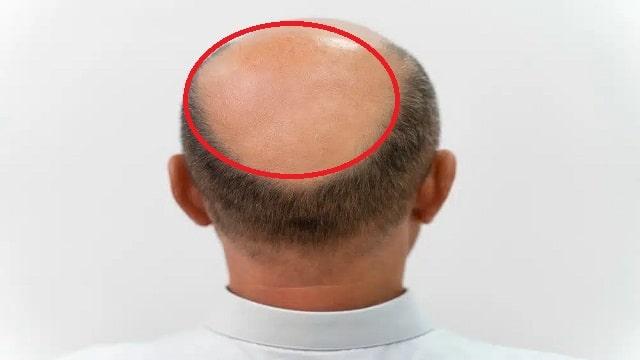
Hunger Edema Symptoms, Risk Factors & Treatment | Diseases List A-Z
Hunger Edema Hunger edema is a term used to describe two types of malnutrition, namely kwashiorkor, and marasmus.
Malnutrition itself is a condition when the body lacks essential nutrients, such as carbohydrates, proteins, fats, vitamins, and minerals.
Kwashiorkor occurs when the body is severely deficient in protein, while marasmus is a condition when the body is deficient in protein and other macronutrients.
Both fall under the category of protein-energy malnutrition.
Kwashiorkor and marasmus can occur simultaneously.
Symptoms of Hunger Edema People with marasmus can experience a variety of symptoms, including: Having low body weight.
People whose body mass index is below 18.
5 are at risk of malnutrition.
Feeling tired all the time.
Difficulty keeping warm.
Lower body temperature.
Decreased appetite.
Lack of emotion.
irritability.
Feeling weak.
Often sick and takes a long time to recover.
Slower breathing.
Numbness or tingling in the hands and feet.
Specifically, the symptoms of the marasmus type of hunger are weight loss, dehydration, chronic diarrhea, and an increasingly thin stomach.
This type of hunger is more common in young children and infants.
While kwashiorkor occurs in older children than children who develop marasmus.
Symptoms of kwashiorkor include: Edema, or swelling due to fluid retention.
Bloated stomach.
Growth and development disorders and difficulty gaining weight.
Causes of Hunger Edema The main cause of hunger, both kwashiorkor and marasmus, is lack of access to food.
Some things that can cause someone to not be able to access food include: Extreme food shortages.
The caregiver’s inability to obtain food due to lack of transportation or physical disability.
However, lack of food intake can also be caused by other things, such as: Suffering from an eating disorder.
Lack of education about good eating patterns.
Taking medications that interfere with nutrient absorption.
Having a medical condition that increases the body’s calorie needs.
Risk Factors for Hunger Edema Hunger is a condition that can happen to anyone, especially in areas with minimal food supplies, drought, and poverty.
Meanwhile, in rich countries, groups of people at risk of malnutrition are: Older adults, especially those who have been hospitalized for a long time.
People who are socially isolated, for example, because they live in rural areas, have certain health problems, or other factors.
Those with low incomes.
Those recovering from or living with a serious illness or condition.
People who have difficulty absorbing nutrients.
People with chronic eating disorders, such as bulimia nervosa or anorexia.
Diagnosis of Hunger Edema Doctors can often diagnose marasmus by examining the person physically and observing their physical signs.
They will also ask about the person’s access to food, history of eating disorders, and medications they are taking.
In addition, the health care professional may also ask about the person’s mental state and mood at the time.
After a physical exam and medical interview, a skin test may be performed to determine if the immune system is functioning properly.
A stool test may also be performed to rule out other health problems associated with diarrhea if diarrhea is a symptom.
The doctor may also perform urine or blood tests to help identify nutritional deficiencies.
Treatment for Hunger Edema Hunger edema can be treated by slowly increasing calorie intake with several small meals.
The doctor may also add liquid protein supplements if the sufferer has trouble digesting food.
Multivitamin supplements are also often recommended and the doctor can prescribe medications to increase appetite.
If symptoms are severe, hospitalization may be necessary.
Complications of Hunger Edema If left untreated, malnutrition can be fatal.
Death can occur from infection, dehydration, or liver failure.
Even when treatment is started, sufferers are at high risk for complications from refeeding syndrome, a metabolic disorder caused by giving nutrients to people who are severely malnourished.
The complications of kwashiorkor are more severe than marasmus and can last longer, as long as the condition is not treated.
Some children may never fully recover from the developmental problems they experience.
They may remain susceptible to liver disease and pancreatic insufficiency.
However, early treatment can lead to better outcomes.
Prevention of Hunger Edema To prevent malnutrition, we need to eat a variety of nutritious foods.
Older adults, young children, and people with serious or chronic illnesses may need additional care to get the nutrients they need.
If someone begins to show signs of malnutrition, they should see a doctor for diagnosis and treatment.
.
Related Articles
health
Pulse Hospital provides best facilities to Jammu patients
November 13, 2024

Excelsior Correspondent JAMMU, Nov 12: Pulse Hospital has received glowing reviews from prominent figures, Mohd Iqbal Khan and Shakeel Ahmed Shawl, both from MRM J&K.
The Hospital has once again demonstrated its commitment to provide exceptional care and comprehensive medical services.
read morehealth
Baldness Symptoms, Risk Factors & Treatment | Diseases List A-Z
November 13, 2024

Baldness is a condition where hair falls out.
This condition is usually permanent and is triggered by various things.
read morehealth
Bronchiectasis Symptoms, Risk Factors & Treatment | Diseases List A-Z
November 13, 2024

What is Bronchiectasis? Bronchiectasis is a condition where there is permanent widening and damage to the bronchi and respiratory tract.
This condition causes mucus to build up in the lungs.
read more